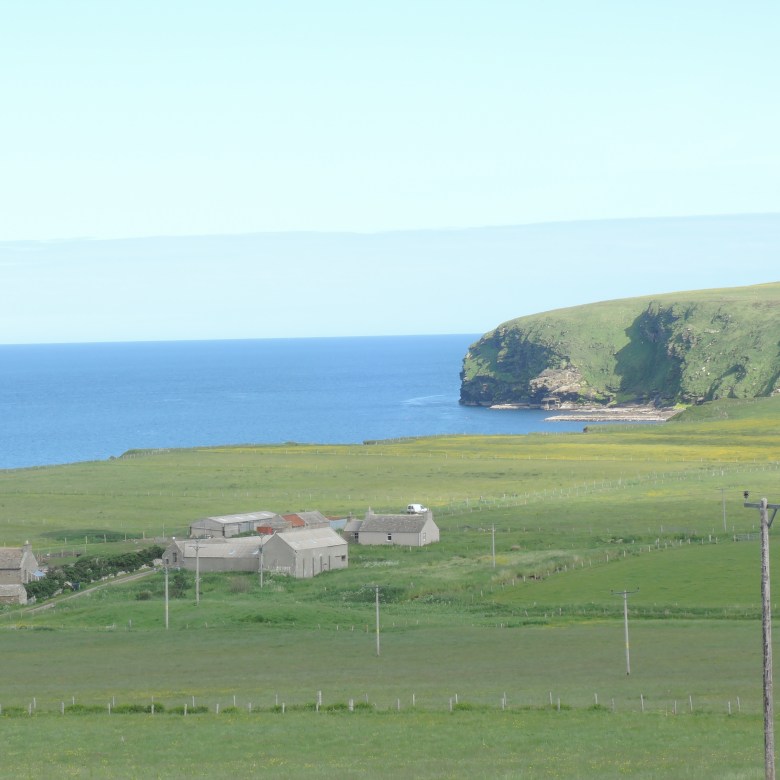
The weather was kinder to us today which meant that the site was a hive of activity.
With many visitors to the site, Ole and Kevin spent much of the day running guided tours, sharing their impressive knowledge of the broch and its associated features.

After yesterday’s introduction to the type of finds that can be expected on site, the students from Stirling University: Stephan, Maria, Bethan and Hanneke were set to work cleaning the exterior of the southern outer wall face of the broch and reported small finds, mainly comprising bone and stone tools. Cleaning is an important component of managing the site as it enables us to see areas of contrast, colour or potential features that become obscured after an area has been exposed to the elements for some time, or compacted due to footfall.
The Cairns has several areas which have suffered from historical collapse and teams have been clearing “shillet” – a mix of shattered stone, soil and rubble from these areas to enable identification of structures underneath. Now that the broch floor is mainly clear of this, Woody and Alex continued the planning and recording of the floor features, a necessary task to complete before any further excavation can continue.
To the north of the site near Trench Q, there is another area of historical collapse. Duncan, one of our eagle-eyed UHI students discovered a fragment of bone pin whilst clearing away more shillet. This was a remarkable find due to the method of “rough trowelling” used to clear away this coarse rubbly deposit.

On a personal level, today has been very exciting. Myself, Paul and Kathryn, all of us UHI students, had the opportunity to plan and grid the souterrain floor and begin the task of gathering 100% of the floor deposits for sampling. The floor was divided into 14 squares known as F1-14 (Structure F is the souterrain) and alternate squares were excavated, material from each square was separated into sample buckets for processing later.

The area that Paul was excavating is directly underneath a (now removed) lintel that was found to contain an aperture that may have been used for pouring a libation into the souterrain. It is hoped that the soil samples may show whether liquids were indeed poured into the opening and what these liquids were. Tantalisingly, during the excavation of his first grid square, Paul discovered a substantial piece of bone, possibly a femur from a yet unknown species. This discovery would correlate with Goodfellow’s 1901 account of bone being discovered nearby in the broch entrance that he had mistaken for a souterrain. The next few days will no doubt reveal more exciting finds in the souterrain deposits.

Blog written by Kath Page second year UHI Archaeology BA Hons student.


Thank you for your text but I don’t seem able to open the photo. Advice please
Hi Alice, You should be able to go through to the 3D model by clicking on the text below the photo. For some reason, WordPress refused to play ball on my computer at home while I was uploading the blog so I had to put in a text link. I have also put the 3d model onto our Facebook page where it is embedded and seems to work on phones and computers. The link to Sketchfab direct is https://sketchfab.com/models/56bdb759bf594af4b87701b0917cb154